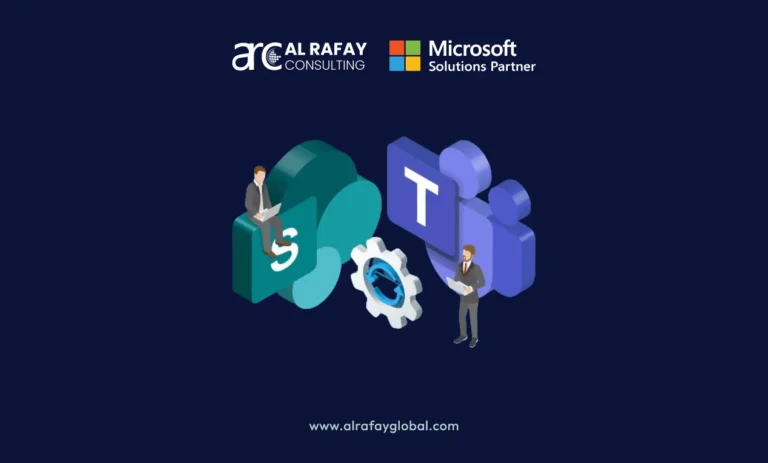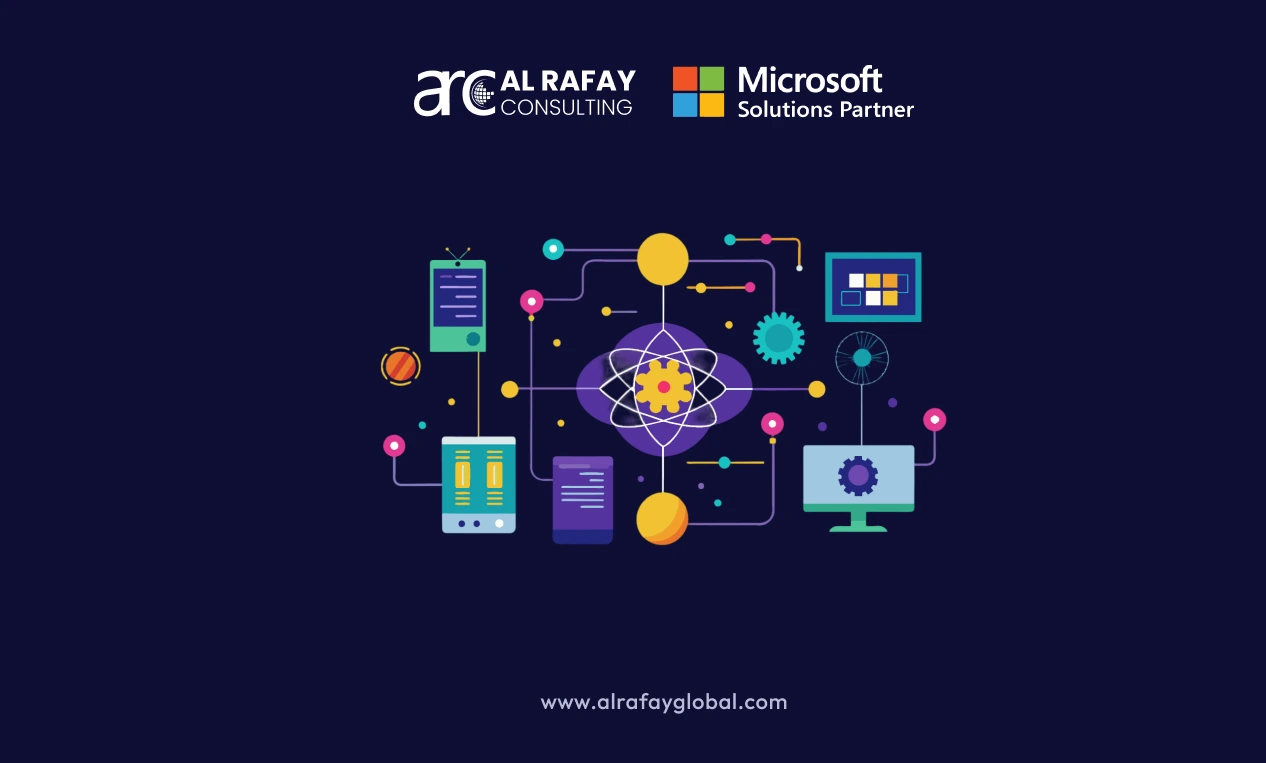Artificial Intelligence (AI) has rapidly transformed industries, driving innovation and creating new business models. From automating repetitive tasks to enabling predictive analytics and decision-making, AI technologies are revolutionizing sectors like finance, healthcare, manufacturing, and retail. According to Bloomberg AI market is projected to be $1.3 Trillion by 2032.
However, despite its transformative potential, many companies struggle with AI adoption. According to Gartner, Inc., by the end of 2025, over 30% of generative AI (GenAI) projects are expected to be abandoned following their proof of concept. This is attributed to factors such as poor data quality, insufficient risk management, rising costs, and ambiguous business value. Organizations also face resistance to change, uncertainty regarding AI ethics, and difficulties aligning AI projects with broader business objectives.
To overcome these hurdles, businesses need a structured AI adoption framework. Such a framework can guide enterprises through the complexities of AI implementation, ensuring that resources are used efficiently and AI is aligned with the company’s strategic goals.
In this blog, we will explore the phases, key components, and best practices of an AI adoption framework, providing a roadmap for enterprises to successfully integrate AI technologies.
Understanding AI in a Business Context
What is AI in Business Operations?
In a business context, AI refers to the use of machine learning, natural language processing, computer vision, and other AI technologies to automate processes, make data-driven decisions, and improve overall operational efficiency. It enables businesses to harness large volumes of data, discover insights, and drive smarter strategies.
For example, AI-driven automation can reduce manual labor in areas like supply chain management, while predictive analytics can enhance decision-making in finance by identifying trends and predicting risks. AI can also improve customer service through chatbots and personalized recommendations, increasing customer satisfaction.
Examples of AI Implementations Across Industries
Finance: Banks use AI to detect fraudulent transactions, streamline regulatory compliance, and offer personalized financial advice.
Healthcare: AI helps in the early diagnosis of diseases through predictive models, and robotic process automation (RPA) is used for administrative tasks, freeing up healthcare workers for critical care.
Manufacturing: AI-driven robotics enhances production efficiency, predictive maintenance reduces downtime, and smart logistics optimize supply chains.
Key Considerations for AI in Business
Before adopting AI, businesses must consider several factors:
Return on Investment (ROI): How will AI projects improve efficiency, reduce costs, or generate revenue?
Scalability: Can the AI solution be scaled across departments or regions?
Ethical Concerns: What are the ethical implications of deploying AI? How will AI fairness and bias be managed?
A strategic and thoughtful approach is critical to unlocking the potential of AI while minimizing risks.
Phases of AI Adoption Framework
Adopting AI requires a phased approach to ensure that every step of the process is aligned with business goals and executed correctly. Here is a breakdown of the six critical phases in an AI adoption framework:
Phase 1: Strategy & Vision
The first step is to define the business strategy and vision for AI. Companies need to identify where AI can deliver the most value, aligning it with long-term business objectives. Key questions include:
What problems can AI solve?
What are the most impactful AI use cases for the organization?
An example could be using AI for predictive maintenance in manufacturing or customer segmentation in retail.
Phase 2: Data Readiness
Data is the fuel for AI. Ensuring data quality, availability, and governance is crucial before any AI initiative can succeed. Organizations must assess their data strategy, determine data readiness, and establish data pipelines to feed AI models. A focus on data governance is also necessary to ensure compliance with regulations like GDPR.
Phase 3: Talent and Skill Development
AI adoption requires specialized skills, such as data science, machine learning engineering, and AI ethics expertise. Organizations must invest in hiring AI talent or upskilling existing employees through training programs. Developing a cross-functional AI team that combines domain expertise with technical proficiency is essential.
Phase 4: Technology and Infrastructure
Building the right infrastructure is key to supporting AI initiatives. Companies need to choose between cloud and on-premises solutions, based on their needs for scalability, security, and integration with existing IT systems. Cloud platforms like AWS, Google Cloud, and Azure offer AI-as-a-Service, which can speed up development and deployment.
Cloud vs. On-Premises AI | Advantages | Disadvantages |
Cloud AI | Scalability, ease of use, lower upfront costs | Data security concerns, reliance on third-party vendors |
On-Premises AI | Greater control over data, compliance | The higher upfront investment, limited scalability |
Phase 5: Model Development and Deployment
Once the data and infrastructure are in place, AI model development can begin. This includes data preprocessing, model selection, and training. Continuous iteration and testing ensure the model’s performance and accuracy before deployment. After deployment, companies must establish mechanisms for ongoing monitoring and retraining to avoid model drift.
Phase 6: Governance, Risk, and Compliance
Ethical AI deployment is a growing concern. Companies must establish governance frameworks that address fairness, transparency, and accountability in AI systems. Ensuring compliance with industry standards and regulations is also critical to mitigating risks and avoiding legal pitfalls.
Key Components of a Successful AI Adoption Framework
To successfully adopt AI, enterprises must focus on several key components:
Business Strategy Alignment
AI should be viewed as an enabler of business transformation, not just a technology project. This requires aligning AI initiatives with broader business goals. For instance, if a company aims to improve customer retention, AI-driven customer insights can be leveraged to offer personalized experiences.
Data and Technology
A robust data architecture is foundational to AI success. Organizations must invest in data lakes and data pipelines that can aggregate and process large volumes of data. AI platforms (e.g., cloud platforms or in-house solutions) must be carefully selected to match the organization’s needs. The increasing availability of AI-as-a-service offerings allows businesses to access powerful AI tools without the need for extensive internal infrastructure.
Component | Purpose |
Data Lakes | Centralized repository for storing structured and unstructured data |
Data Pipelines | Automated systems to collect, process, and move data to AI models |
Change Management
AI adoption requires a cultural shift within organizations. Employees may resist AI due to fears of job displacement or lack of understanding of the technology. Companies should invest in change management practices, including communication, training, and workshops, to foster AI literacy and ensure smooth adoption.
AI Governance and Ethical AI
Building trust in AI systems is crucial. Companies must develop AI governance frameworks that define rules for AI development, deployment, and monitoring. Ethical AI practices, such as ensuring fairness and avoiding bias in algorithms, are also essential to maintaining trust with stakeholders.
Continuous Monitoring and Improvement
AI is not a “set-it-and-forget-it” technology. Post-deployment monitoring ensures that AI models continue to perform well, providing the desired outcomes. Continuous improvement processes should be established to retrain models, refine algorithms, and ensure AI systems remain compliant with regulations.
How to Evaluate AI Adoption Maturity
Evaluating the maturity of AI adoption within an organization is crucial for understanding its current capabilities, identifying gaps, and planning for future growth. AI maturity models provide a structured approach to assess an organization’s progress across various dimensions, such as technology, data, skills, and governance.
Key Dimensions of AI Maturity
Strategy and Leadership: AI adoption begins with a clear strategy that aligns with overall business objectives. Maturity in this area is demonstrated by executive-level commitment to AI initiatives and the integration of AI into strategic planning processes.
Data and Infrastructure: Mature AI organizations have robust data management practices, ensuring data quality, availability, and accessibility. An AI-ready infrastructure is scalable, secure, and supports advanced analytics and AI workloads. Gartner reports that 82% of executives see data quality as a barrier to successful AI adoption, indicating that this dimension is critical.
Talent and Skills: AI maturity involves building a team of skilled data scientists, AI engineers, and business analysts capable of designing and implementing AI solutions. More mature organizations focus on continuous learning and upskilling to stay ahead in AI advancements.
Processes and Tools: The use of AI tools, frameworks, and best practices defines the operational maturity of AI. Automated pipelines for data preprocessing, model training, and deployment are indicators of a more advanced AI practice. Additionally, a focus on operationalizing AI models through AI Ops frameworks marks higher maturity levels.
Governance and Ethics: Mature organizations implement strong governance frameworks, ensuring compliance, ethical AI practices, and transparent model decision-making. Responsible AI is now a critical dimension, with an increased focus on fairness, accountability, and managing AI risks.
AI Maturity Assessment Models
Several frameworks, such as the AI Maturity Model (AIMM) by IDC, help organizations assess their AI maturity. These models categorize businesses into levels such as “AI Novices,” “AI Experimenters,” and “AI Leaders.” Each level reflects an organization’s ability to scale AI projects, manage AI risks, and integrate AI into its core functions.
Evaluating AI maturity provides organizations with valuable insights into their AI journey, highlighting areas for improvement and helping them prioritize future investments.
Challenges in AI Adoption and How to Overcome Them
Technical Challenges
One of the most significant technical challenges in AI adoption is data. Poor data quality, data silos, and inadequate data governance can hinder AI performance. Moreover, integrating AI systems with legacy IT infrastructure is often complex and costly. Scalability is another concern, as models trained on small datasets may not perform well when scaled.
To overcome these challenges, businesses should:
Invest in data governance and integration solutions
Build flexible and scalable AI infrastructures
Use cloud-based AI services for rapid experimentation
Cultural Challenges
Cultural resistance is another major barrier to AI adoption. Employees may fear that AI will replace their jobs or be skeptical of its effectiveness. Lack of AI literacy across the organization can also slow down the adoption process. To address these issues, companies need to promote a culture of innovation and continuous learning, encouraging employees to embrace AI as a tool for empowerment rather than replacement.
Resource Constraints
AI projects often require specialized skills and resources, which can be a challenge for organizations with limited budgets. Furthermore, the demand for AI talent far exceeds the supply, leading to difficulties in hiring qualified professionals.
One solution is to partner with external AI consultants or vendors who can provide the expertise needed. Additionally, businesses can leverage AI-as-a-service offerings, which reduce the need for in-house resources.
Ethical and Regulatory Challenges
As AI becomes more prevalent, ethical concerns around privacy, fairness, and accountability have grown. Companies must ensure that their AI systems comply with regulations like GDPR and mitigate risks related to data privacy and algorithmic bias.
To address these challenges, businesses should:
Develop ethical AI frameworks
Conduct regular audits to ensure compliance with regulations
Implement explainable AI (XAI) to make AI decisions transparent
Building a Roadmap for AI Adoption
AI adoption isn’t a one-size-fits-all process. It requires creating a structured roadmap tailored to a company’s unique business goals, industry needs, and technological readiness. To craft an effective roadmap, organizations should consider the following key steps:
1. Assessment of Readiness
Before diving into AI projects, businesses must assess their readiness in terms of infrastructure, data availability, and talent. This includes auditing current technology stacks, data maturity, and identifying gaps in AI-related skills. A survey by McKinsey reveals that only 19% of companies have the capabilities required to adopt AI at scale.
2. Prioritization of Projects
AI projects should align with business objectives, such as improving customer experience or reducing operational costs. Prioritize use cases that have measurable benefits and a clear path to implementation. Projects can range from predictive analytics in sales forecasting to automation in customer support.
3. Setting Timelines and Milestones
A clear timeline with realistic milestones is essential. Typically, AI adoption progresses in phases—starting with pilot projects and moving to enterprise-wide deployment. Timelines should account for the complexity of each phase, such as data collection, model training, and deployment.
4. Budgeting and Resource Allocation
AI initiatives can be resource-intensive. Budgeting should include costs for infrastructure (e.g., cloud services, data storage), personnel (data scientists, engineers), and third-party tools (e.g., AI platforms). According to Gartner, global spending on AI is expected to reach $297.9billion by 2027. Allocating sufficient resources will ensure project success and scalability.
5. Building Partnerships
Collaboration with external AI vendors, consultants, and academic institutions can accelerate AI adoption. For example, academic partnerships can provide access to cutting-edge research, while AI vendors offer pre-built tools and frameworks.
Case Study: Sample Roadmap of AI Adoption in a Mid-Size Enterprise
Consider a mid-size retail enterprise looking to adopt AI for improving customer experience and inventory management. Here’s a high-level roadmap:
Phase | Key Milestones | Timeframe |
Assessment | Data audit, readiness analysis | 1-2 months |
Pilot Project | Customer service chatbot implementation | 3-4 months |
Scaling | Expand chatbot, introduce predictive AI | 6-12 months |
Full Adoption | AI-driven inventory management system | 12-18 months |
By following a structured roadmap, this enterprise can gradually integrate AI technologies aligned with its long-term business objectives.
Best Practices for Scaling AI Across the Organization
Once initial AI projects are successful, the next challenge is scaling these initiatives organization-wide. Scaling AI requires thoughtful planning, resources, and governance to ensure that AI’s benefits are realized at every level of the organization.
1. From Pilot to Enterprise-Wide Initiatives
AI adoption often starts with small, targeted pilot projects. However, expanding to enterprise-wide initiatives requires establishing a robust infrastructure, standardizing processes, and training teams. Pilot successes should be leveraged to gain organizational buy-in and scale projects that deliver high ROI.
2. Role of Automation in Scaling AI
Automation plays a critical role in scaling AI solutions. From automated data pipelines to continuous model deployment, automation ensures that AI models can be implemented efficiently across various business units. This includes integrating robotic process automation (RPA) with AI for more advanced decision-making systems.
3. Building AI Centers of Excellence
Many organizations create AI Centers of Excellence (CoE) to govern and scale AI projects. These CoEs are composed of cross-functional teams of data scientists, engineers, and business leaders who develop AI strategies, monitor projects, and ensure adherence to best practices.
4. Cross-Functional Collaboration
Scaling AI requires collaboration across various departments. IT teams provide the necessary infrastructure, while business teams identify use cases. Data scientists and machine learning engineers build and deploy the models. Close collaboration ensures alignment between business needs and AI capabilities.
5. Pre-built AI Models vs. Custom Solutions
Scaling AI also involves deciding between using pre-built models (available through platforms like Azure AI and Google Cloud) or developing custom models in-house. Pre-built models can accelerate deployment but may lack the specificity needed for certain use cases. Custom solutions offer greater flexibility but require more time and resources.
Measuring AI Success: KPIs and Metrics
Measuring the success of AI initiatives is crucial for determining their business impact and ensuring continuous improvement. Key performance indicators (KPIs) provide valuable insights into whether AI projects are meeting their objectives.
Common KPIs for AI Projects
Return on Investment (ROI): The financial gains from AI investments compared to their costs is a fundamental metric. For example, AI-driven demand forecasting may increase sales while reducing inventory costs, providing a clear ROI.
Operational Efficiency: AI’s impact on streamlining processes and improving productivity can be measured through operational KPIs such as reduced processing times and lower error rates. In logistics, for instance, AI can reduce delivery times by optimizing routes, leading to higher operational efficiency.
Cost Savings: AI adoption often leads to cost savings by automating repetitive tasks or improving decision-making. For example, AI-driven chatbots can reduce customer service costs by handling high volumes of routine inquiries.
Customer Satisfaction: AI’s ability to enhance customer experience is a key measure of success. Sentiment analysis, customer feedback, and Net Promoter Score (NPS) are valuable metrics for understanding AI’s impact on customer satisfaction.
Importance of Long-term Monitoring of AI Models
AI models can degrade over time due to changes in data, market conditions, or internal operations. Long-term monitoring is essential to detect model drift and retrain AI systems to maintain accuracy. According to a report by McKinsey, 53% of companies report that their AI models degrade in performance within a year, underscoring the need for regular model updates.
Future Trends in AI Adoption
As AI continues to evolve, several emerging trends will shape the future of AI adoption.
AI Democratization: Tools that allow non-technical users to build, deploy, and manage AI models are gaining traction. Low-code and no-code AI platforms empower business users to leverage AI without requiring deep technical expertise.
Explainable AI (XAI): As AI becomes more widespread, explainability is critical for gaining trust. XAI allows organizations to understand how AI models make decisions, ensuring transparency and compliance with regulations like GDPR.
AI-driven Automation: Robotic Process Automation (RPA) and intelligent automation are transforming how businesses operate by automating repetitive, manual tasks. The global RPA market is expected to reach $13.39 billion by 2030, according to Statista.
Ethics and Responsible AI: Ethical considerations around bias, privacy, and transparency are becoming central to AI adoption. Organizations are increasingly focusing on responsible AI frameworks to ensure fairness and accountability.
Conclusion
In conclusion, adopting AI necessitates a strategic, phased approach aligned with business goals. A structured roadmap and best practices for scaling and measuring success are vital for maximizing AI’s potential. Businesses that prioritize adaptability and ethical practices amid emerging trends will thrive.
If you need any consultation for enterprise AI endevours for your organization, contract our Micorsoft certified team of AI experts at Al Rafay Consulting.













